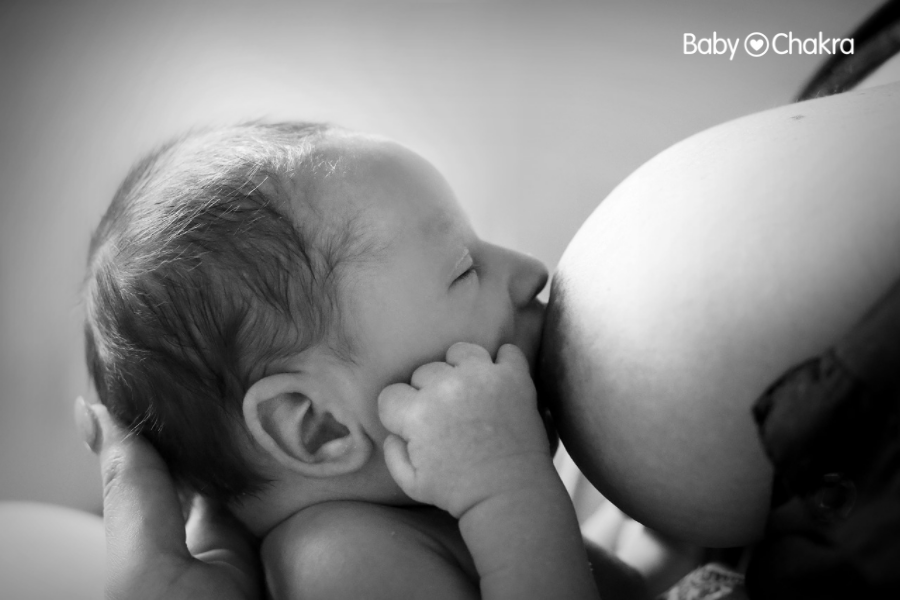
Different Phases Of Breast Milk
8 Apr 2022 | 4 min Read
Sayani Basu
Author | 607 Articles
Breast milk production begins months before the delivery. From the 4th week of pregnancy, lactocytes, milk producing cells start forming. You might notice that your breast is growing during pregnancy but the amount of milk you produce depends on the milk producing tissues.
The milk production cycle commences after childbirth. Breast milk is a boon for the baby and is the main source of nutrients for the baby.
It provides the specific nutrients to your baby that the little one needs to grow. It also acts as a source of water to keep the infant hydrated.
Just like pregnancy has trimesters, breast milk too has three phases.
Phases Of Breast Milk
The phases of breast milk production are:
Colostrum – First Stage of Milk
Colostrum is the first and the shortest stage of your breast milk and lasts only a few days after your baby is born. Doctors refer to it as “liquid gold” for its deep yellow colour and its importance for your infant.
Colostrum is thick and creamy. A nutritionally dense superfood for babies, it is rich in vitamins, minerals and proteins.
It also has antibodies and white blood cells that protect your baby from infections. It also helps your baby’s digestive system to grow.
As your baby’s body cannot produce antibodies at such a young age, this phase of milk is very important.
Colostrum is high in protein but low in sugar and fat. This makes it easier for your infant to digest.
A feeding for your infant consists of about one and half teaspoons of colostrum. Although this sounds a small amount, your newborn’s stomach is small and does not begin to stretch until the third day.
By this time, your baby would be capable of eating more per feeding, and this is when your transitional milk comes in.
Transitional Milk – Second Stage of Milk
New mums would start producing transitional milk, between three-six days of postpartum. As the infant is growing rapidly during the first few weeks, your breast milk adapts to meet their changing needs.
As your body produces transitional milk, your breasts are learning how much milk shall be supplied. This would depend on how much breast milk is the little one consuming.
Contrary to your colostrum, transitional milk has a higher content of fat and lactose.
Whey proteins play an important role in digestion now. These are rich in antibodies and remain liquid in your baby’s stomach. This makes them easily digestible.
Casein protein curdles when mixed with the acid in your baby’s stomach, helping them feel fuller longer. This is the reason you can notice chunks in your baby’s spit-up.
The colour of the milk changes from yellow to white slowly. As the breast starts to stimulate, you might feel fuller and firmer. Regular feeding sessions can ease any discomfort during this stage.
Your milk supply would transition into your mature milk by the end of your first month postpartum.
Mature Milk – Third Stage of Milk
The final stage of breast milk transition is mature milk. 90% of it is water and keeps the little one hydrated. The other 10% is carbohydrates, proteins, and fats which are crucial for both growth and energy.
The mature milk also helps build the little one’s gut bacteria, boost their immune system, and feeds their rapidly growing brain.
Your mature breast milk contains stem cells and hormones that build the foundation for your baby’s health.
Like the other stages of breast milk, mature milk also continues to supply the baby essential nutrients and immune cells, and will change to meet their unique needs.
There are two types of mature milk:
- Fore milk: Fore milk is the milk that comes out at the beginning of your feed. It is thinner and contains water, vitamins, and protein.
- Hindmilk: Hindmilk is the milk that gradually comes as your baby continues to feed. It is higher in fat and calories and is necessary for weight gain.
Unlike bottle feeding, you can’t measure the volume of milk your baby drinks while breastfeeding. Almost all mums (except the ones with rare exceptions) can produce enough breast milk to breastfeed their babies exclusively.
Your baby’s nursing stimulates your prolactin (the hormone which is responsible for producing milk). Hence, the more you breastfeed, the more milk prolactin would produce.
A


Suggestions offered by doctors on BabyChakra are of advisory nature i.e., for educational and informational purposes only. Content posted on, created for, or compiled by BabyChakra is not intended or designed to replace your doctor's independent judgment about any symptom, condition, or the appropriateness or risks of a procedure or treatment for a given person.
